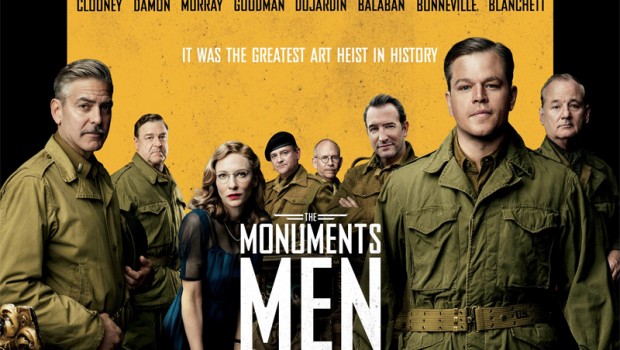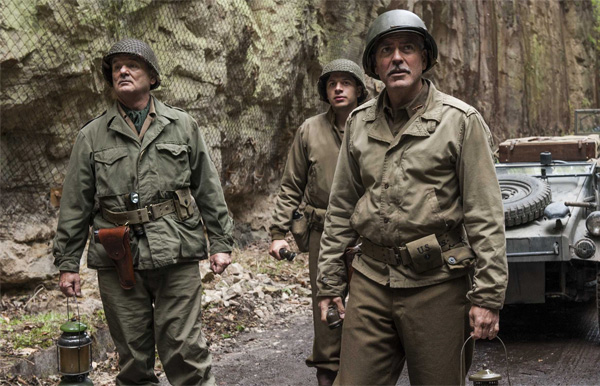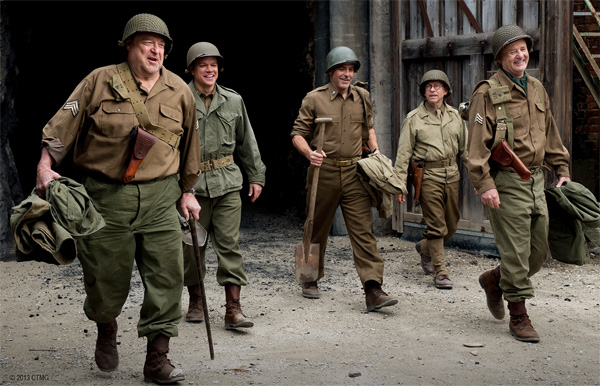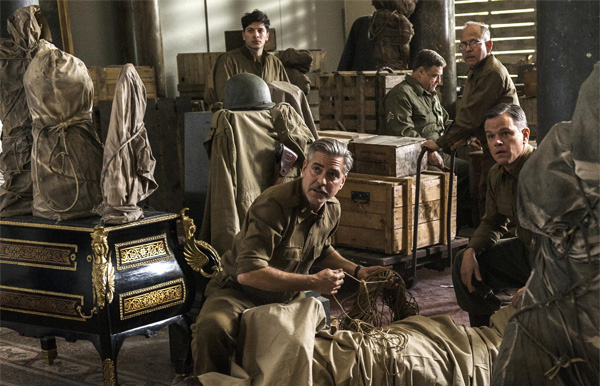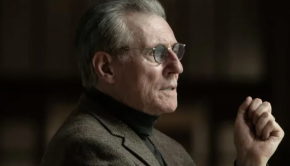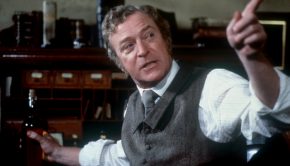Monuments Men DVD Review
Summary: George Clooney will survive because he is intelligent and capable of making films that are infinitely better than this. He has an easy task ahead of him.
2
Poor
The Monuments Men
Distributor: Paramount
Genre: Drama
Reviewer: Damien Straker
Running Time: 118 minutes
Rating: M
One of the many problems with George Clooney’s new film The Monuments Men is that he only identifies his characters by either their star power or their occupation. As the writer, producer, director and star, Clooney has summoned an embarrassingly rich cast but doesn’t test them. Seven actors including himself, Bill Murray, Jean Dujardin, Matt Damon, Bob Balaban, John Goodman and Hugh Bonneville, form the Monuments Men. Cate Blanchett also stars as Claire Simone, a French curator.
The men are creative types and art experts who are assigned during WWII to reclaim art stolen by the Nazis and Adolf Hitler and to restore it. These characters are established with minimal context, so no one fully dissolves into their characters or belongs to the period. It cynically asks us to be blindsided and dazzled by the actors alone. Their performances lack intensity. You have never seen a more jovial group of blokes in a war zone. Cate Blanchett underlines the film’s glaring disregard for authenticity in favour of celebrity because in spite of her efforts, she still isn’t French. For a film so boastful about preserving history, it seems all too content to commercialise its own story.
The mediocrity is surprising because I have enjoyed the films George Clooney and Grant Heslov have written together (The Ides of March and Good Night and Good Luck). Heslov also directed Clooney in The Men Who Stare At Goats, which was hilarious. Co-writing a screenplay together from Robert M. Edsel’s book, this is their weakest film so far. Until now all their films have sustained a subtext about the ugliness of political warfare. The Monuments Men is political as well but also transparent and too self-important to realise it. It’s about the men who fought to save art! At the very least, this is a true story. The real Monuments Men belonged to the Monuments, Fine Arts, and Archives, which was made up of more than three hundred people, both men and women, from over a dozen different nations. They were tasked with recovering stolen art but also minimising the amount of damage done to historical buildings from the bombing of the Allies. By protecting art and property, five million objects were returned to their countries of origin. Dr. Nigel Pollard from Swansea University said while he enjoyed the film, he felt it reduced the importance of the British involvement by focussing mostly on American characters.
Clooney and Heslov’s script doesn’t compensate for its historical inaccuracies. Along with the thin characterisation, the narrative substitutes new, insightful thematic ideas for clichés about personal sacrifice, dedication and male bonding. If you’re still awake, the notion of the Monuments Men being passive and non-violent towards their enemies because they are not ordinary soldiers is interesting but not persistent enough. The narrative is overly fragmented, divided into multiple subplots so there isn’t a clear central character or development arc for the rest of the team, who are already underwritten. Major historical events like Normandy and the Battle of the Bulge are treated like fleeting episodes without conflict between the group and a sense of danger. Someone felt that in order to market the film with the same jokiness as Clooney’s Ocean’s Eleven films the amount of carnage had to be reduced. The Monuments Men obviously weren’t exclusive to casualties in the war but there is little sense of the widespread damage of the war. The insulation of the film’s scenarios defeats the point of what the real Monuments Men were trying to achieve and what they had to prevent.
Behind the camera George Clooney does nothing to salvage his own screenplay because his direction lacks attention to detail. The pace is leaden and some set pieces are embarrassingly underpopulated and poorly constructed, like a gunfight in a ruined city that’s essentially a ghost town, or an ambush from a group of Nazis hiding in the bushes. Clooney can’t decide what the tone should be either. The film grasps at an awkward comedic lightness as we see these older, unfit men undertake basic training (how did John Goodman pass?) but then the sentiment is piled on with speechifying about sacrificing our boys’ lives for the sake of art and culture. The movie feels terribly old fashioned and not in a complimentary way that supports an authenticated period rendering. Thankfully, George Clooney will survive because he is intelligent and capable of making films that are infinitely better than this. He has an easy task ahead of him.
Special Features
George Clooney’s Mission
Marshalling the Troops


